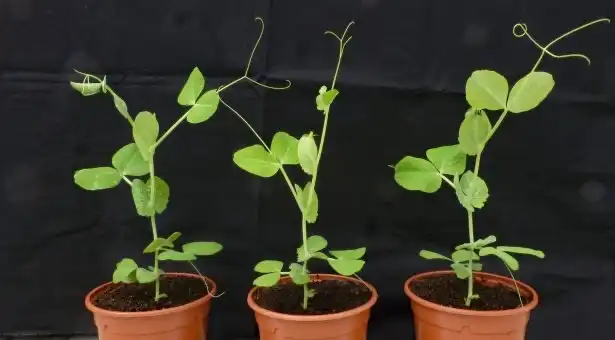A genetic breakthrough has opened new opportunities for iron-fortified vegetables and cereal crops to help address the global health issue of anaemia.
John Innes Centre researchers used a newly available map of the pea-genome to identify the underlying genetic sequence responsible for two high-iron mutations in peas.
Professor Janneke Balk, a group leader at the John Innes Centre and an author of the research said: “There are a number of intriguing opportunities arising from this research but probably the most exciting outcome is that knowledge of these mutations could inform gene editing strategies to increase iron in a wide range of crops.”
The discovery may help address the persistent problem of iron deficiency, a nutritional health issue that particularly affects girls and women in the UK and other parts of the world. This problem is likely to get worse as people eat less meat because of climate change concerns.
Iron deficiency anaemia is a condition where a lack of iron in the body leads to a reduction in the number of red blood cells which help store and carry oxygen.
Staple foods like wheat flour and breakfast cereals are regularly fortified to ensure that we consume enough iron each day to stave off this important nutritional shortfall.
To make the discovery John Innes Centre Researchers used an RNA sequencing technique which looks for the genes expressed in high iron pea plants and compares these with wild type plants that have normal levels of iron.
Using computational mapping techniques and plant experiments, the team in the group of Dr Balk have identified the exact mutations and their locations on the pea genome.
By identifying the minute changes in the genetic code that have caused these high-iron phenotypes, the research has unlocked new opportunities for biofortification – enhancing the nutritional value of food.
Possible commercial applications include breeding pea shoots with 10 times more iron, or supplements with a natural, more bioavailable form of iron without some of the side effects associated with chemically derived iron supplements.
Even more exciting is that this knowledge of these genes, which are highly conserved across the plant kingdom, could help biofortify other crops such as wheat and barley using gene-editing and other modern breeding techniques.
A long-standing scientific mystery
The two high-iron pea varieties have been critical in research over the past 30 years to better understand how plants transport iron from the roots and make it available for other organs, including seeds.
Plants must regulate iron uptake because too much is lethal. The identified mutations are valuable because they maintain high levels of iron accumulation but not so much that the iron becomes very toxic to the plant.
These mutations have been at the centre of a long-standing mystery. Because of the large size of the pea genome, researchers had not been able to find the mutations which cause iron accumulation. However, 4 years ago the first draft of the whole pea genome sequence was put together and this greatly helped Professor Balk and her team.
This new research adds to that history, reflects professor Balk: “I have been associated with the field of iron homeostasis in plants for 20 years and every conference I went to, or in papers, these two genes are mentioned but people did not have the mutations.”
“Now that we have identified these mutated genes, we can start making advances in both scientific understanding and practical improvements in producing food with higher more bioavailable iron content.”
The two high iron mutations at the centre of this longstanding genetic puzzle were created in the 1990s by two different research groups, in Germany and the USA.
Soon after they published their findings, the groups donated some of the pea seeds to the BBSRC-funded Germplasm Resources Unit, a national capability resource based at the John Innes Centre. The seed stocks were maintained and kept viable over several decades.”
Professor Balk commented: “This was important to the success of our research because the seeds from one of the mutants loses viability after a couple of years. It shows the key role of seed banks and maintaining historical collections.”
Read the paper: The Plant Journal
Article source: John Innes Centre
Image: Three pea potted plants. Credit: John Innes Centre






